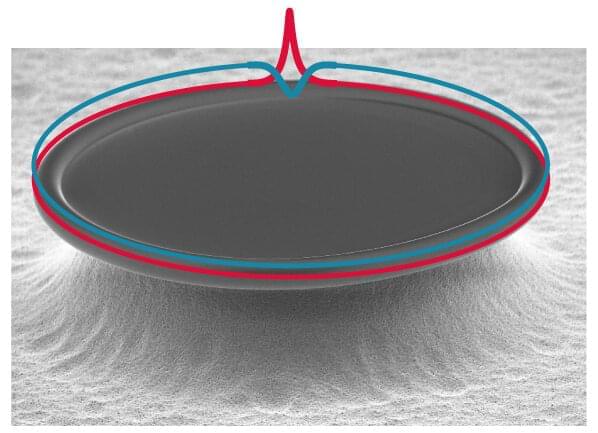For the first time, scientists were able to create ultrashort dark and bright light pulses that are linked together in tiny glass rings called microresonators. Each of the flashes consist of many different, precisely defined colors: a frequency comb. The combination of the pulses increases the color range of the emitted light from the microresonators. This new light source helps to make more precise sensors to trace for example lowest quantities of explosives at an airport or for distance sensors in autonomous cars to detect obstacles on a street.
It sounds like magic: Laser light of only one color produce a rainbow of many different colors. Scientists are able to produce this strange effect in microresonators, small disks made of glass. If they send a pulsed laser beam into these structures, ultrashort packets of light waves are running in its interior in circles. And start to send out light of different, evenly spaced frequencies like the teeth of a comb. The invention of the optical frequency comb was awarded with the Nobel Prize in Physics in 2005.
Now, researcher from the Max-Planck-Institute for the Science of Light (MPL) in Erlangen and the Imperial College London were able to produce for the first time an even stranger effect: By directing two Laser beams of slightly different infrared light at the outer rim of the microresonator they got two wave packets, called solitons: one bright and one dark, which run in circles. A dark pulse means having a constant light signal that goes dark for a very short time. Both dark and bright light pulses only last for 1/1013 th of a second.
